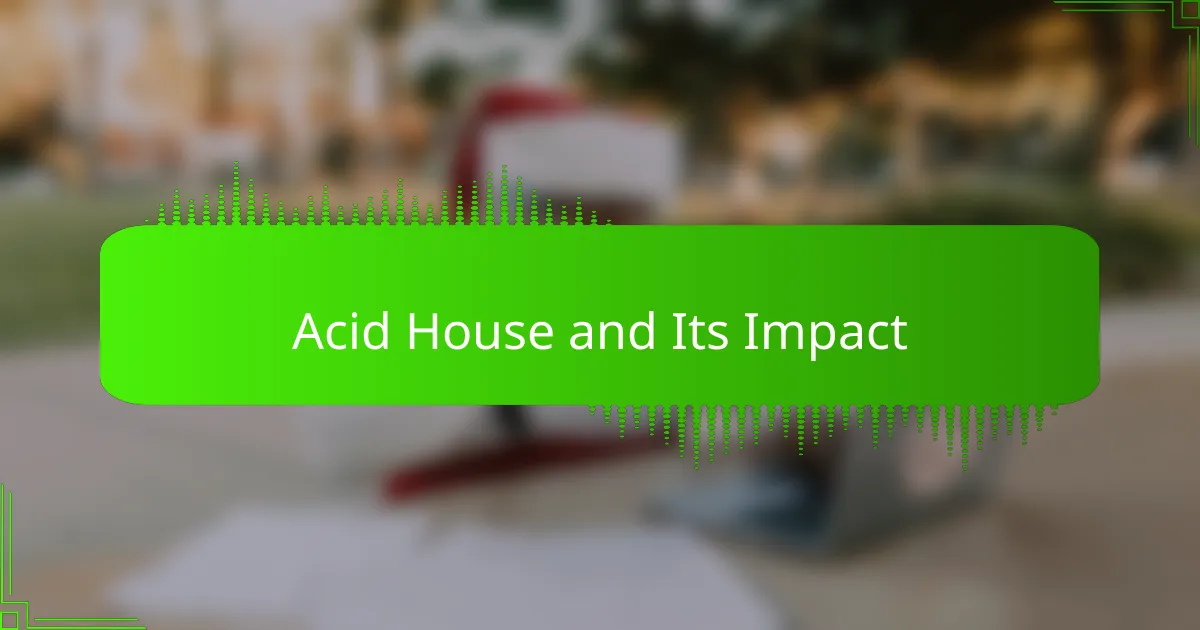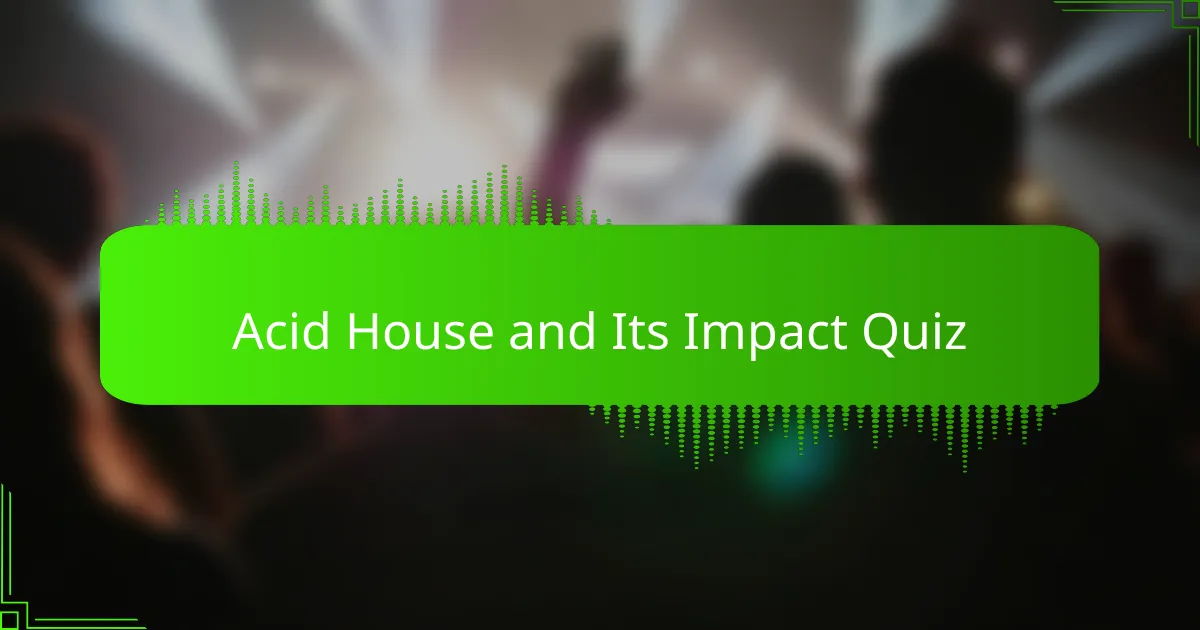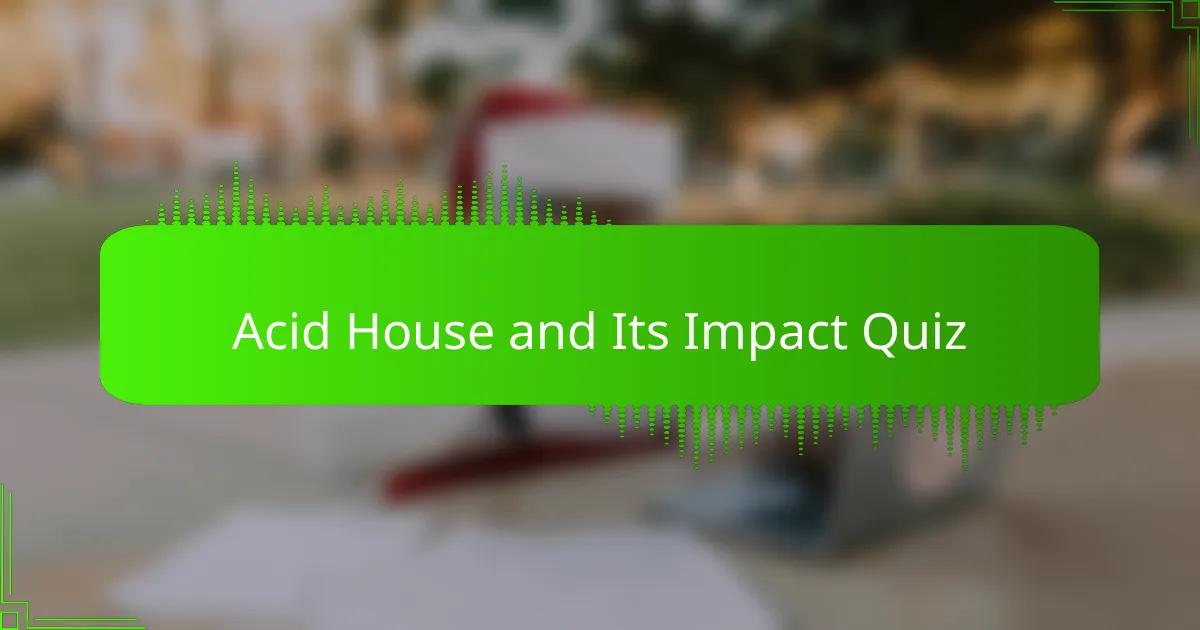
Congratulations on Completing the Quiz!
You’ve successfully navigated through our quiz on Acid House and its impact on the music scene. This genre, characterized by its unique sounds and vibrant culture, has shaped not only the dance music landscape but also broader societal trends. Discovering its roots and influence could have revealed surprising connections between music, fashion, and community.
Through this quiz, you might have gained insights into key figures, notable tracks, and the evolution of Acid House. It’s fascinating to see how this genre has sparked movements and fostered creativity across decades. The knowledge you’ve gained today can enhance your appreciation for the music and the stories behind it.
We invite you to explore more about Acid House and its significance. In the next section of our online music magazine, you’ll find deeper analyses, artist interviews, and playlists that celebrate this vibrant genre. Expanding your knowledge is just a click away, so dive in and continue your journey through the captivating world of Acid House!

Acid House and Its Impact
Understanding Acid House: Origins and Definition
Acid House emerged in the mid-1980s, primarily from Chicago and Detroit, defined by its distinctive use of the Roland TB-303 bass synthesizer. This genre is characterized by its squelchy basslines, repetitive beats, and vibrant, pulsating rhythms. Pioneering figures such as Frankie Knuckles and DJ Pierre played essential roles in its early development. Acid House became integral to the house music scene, setting the stage for various electronic dance music genres.
The Cultural Impact of Acid House in the 1980s
Acid House significantly influenced youth culture in the late ’80s, particularly in the UK. It fostered a sense of community among ravers, leading to the iconic warehouse parties and illegal raves. The genre reflected societal changes, promoting ideals of freedom and hedonism amid economic challenges. Artists like Orbital and Andrew Weatherall were pivotal in popularizing Acid House, along with the infamous “Smiley” emblem that became synonymous with the movement.
Acid House and the Evolution of Electronic Dance Music
The rise of Acid House laid the groundwork for various subgenres within electronic dance music. It informed the development of techno, trance, and even later styles like progressive house. The innovative production techniques introduced in Acid House influenced artists globally. Notable acts, such as Daft Punk and The Chemical Brothers, cite Acid House as a significant inspiration for their work.
Acid House’s Influence on Fashion and Aesthetics
The Acid House movement inspired a unique fashion aesthetic, characterized by bright colors, baggy clothing, and psychedelic patterns. This visual style was often complemented by graphic elements like smiling faces and neon colors, integral to rave culture. Clubs like Shoom in London embodied this aesthetic, creating environments that enhanced the Acid House experience through decor and visual arts.
The Resurgence of Acid House in Modern Music
In recent years, Acid House has experienced a revival, influencing contemporary artists and festivals. Modern producers like Ada Kaleh and Amelie Lens incorporate Acid House elements into their tracks, bringing nostalgia and innovation. Events such as the annual “Acid House Reunion” celebrate the genre, drawing new listeners while honoring its legacy. This resurgence highlights Acid House’s enduring impact on the electronic music landscape.
What is Acid House?
Acid House is a subgenre of house music that emerged in the mid-1980s, characterized by its use of the Roland TB-303 bass synthesizer. This distinctive sound produces squelchy, resonant bass lines that define the genre. The genre became popular in Chicago and spread to the UK, prominently influencing rave culture. The track “Acid Tracks” by Phuture, released in 1987, is widely regarded as one of the foundational pieces of Acid House, illustrating its pioneering use of synthesizers to create hypnotic soundscapes.
How did Acid House influence the music scene?
Acid House significantly impacted the music scene by catalyzing the rave movement in the late 1980s and early 1990s. Its introduction of electronic sounds and rhythms encouraged the development of various electronic genres, including techno and trance. With events like the Second Summer of Love in the UK, Acid House popularized all-night dance parties, shifting the focus of music consumption from traditional clubs to warehouse raves. This transition emphasized the communal experience of music, fundamentally altering nightlife and youth culture.
Where did Acid House originate?
Acid House originated in Chicago, Illinois, during the mid-1980s. It was driven by a group of DJs and producers, including Marshall Jefferson and Derrick Carter, who were experimenting with house music and the TB-303 synthesizer. The genre quickly gained traction in the UK, especially in cities like London and Manchester, leading to a vibrant underground scene. The phenomenon was further fueled by pirate radio stations, which played Acid House tracks, promoting its widespread appeal.
When was Acid House most popular?
Acid House reached its peak popularity between 1988 and 1992. It coincided with the rave culture explosion in the UK, with massive gatherings celebrating the music. The genre’s influence can be traced through iconic venues like The Haçienda in Manchester. Government backlash against rave culture, including the introduction of the Criminal Justice and Public Order Act in 1994, marked the decline of Acid House’s mainstream presence but not its lasting legacy.
Who are some key artists associated with Acid House?
Key artists associated with Acid House include Phuture, who are credited with creating the genre with “Acid Tracks.” Other influential figures include DJ Pierre, who further popularized the Acid sound, and Chicago veterans like Frankie Knuckles and Marshall Jefferson. In the UK, artists such as The Orb and 808 State incorporated Acid House elements in their work. Their contributions helped shape the music landscape, intertwining with various electronic genres and influencing countless artists worldwide.

